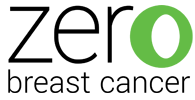From the Desk of Catherine Thomsen: Improving Health Education!
I recently had the privilege of attending the Society of Public Health Education (SOPHE) conference. So many researchers and community organizations are doing work relevant to ZBC! I want to summarize what I learned about two topics that are particularly timely: Health Inequity and Health Resources & Media Literacy.
Health Inequity
In the U.S., people have different access to health information and health care. At ZBC, we particularly try to reach people and communities who are historically excluded and have fewer resources. Addressing inequity goes beyond inequality. The above image helps explain the difference between supporting everyone, supporting people based on their needs, and changing the system so that support is no longer required.
A session on Inequities in Obesity raised issues that we try to be aware of in our campaigns. It is important, for example, to consider the emotional and social contexts for how people approach food, physical activity and other factors that affect body weight and size. ZBC focuses on positive actions to be taken to promote healthy behaviors. For example, we emphasize healthy eating and movement, rather than weight loss. We must also take into account the environmental factors we don’t have control over, such as what food is available and the safety of walking in our neighborhoods. You can read more in a related paper here.
One of the most interesting things I learned is a new approach to promoting breast health among lesbian, bisexual, trans, and non-binary people. The Equitas Health Institute for LGBTQ Health Equity has developed a campaign that uses both the terms breast and chest to engage people who have very different relationships with their mammary tissue. Their program also emphasizes that despite any past negative health care experiences, we all deserve access to mammography and chest wall care that affirms our bodies, genders, and identities.
Health Resources & Media Literacy
The internet has become a major source of health information. It is particularly important for people who are marginalized, have felt excluded, or are addressing sensitive issues to be able to search freely. However, I learned that more than 20% of people in the U.S. don’t have broadband internet access. Lack of familiarity with internet health resources can make it even harder to distinguish good advice from bad. ZBC works hard to ensure that our campaigns are available on any device, as Spanish-speakers, people with lower-incomes and those in rural areas often access the internet through their cell phones.
In addition to the internet, we are exposed to other media channels and various forms of advertising. Media literacy includes learning how to decode messages and understand their impact. While media can entertain and inform, often it affects health, including consumption of unhealthy foods and drinks. Junk food is marketed more heavily to racial and ethnic minority kids. At SOPHE, a researcher reported that after learning about how they are targeted locations and advertising, African American parents and children were angry and parents no longer felt that fast food companies were “investing” in their area. When people understand how unhealthy food is marketed, they are able to make healthier choices.
I was happy to hear that many experts consider videos to be the future of health education, as this fits nicely with ZBC’s current approach.
We look forward to applying new insights and latest best practices shared at the SOPHE conference to our work to improve health education to reduce breast cancer risk.
Note: Going forward we plan to make use of the National Cancer Institute's data collection program called HINTS (Health Information National Trends Survey) that was "created to monitor changes in the rapidly evolving field of health communication. Survey researchers are using the data to understand how adults 18 years and older use different communication channels, including the Internet, to obtain vital health information for themselves and their loved ones. Program planners are using the data to overcome barriers to health information usage across populations, and obtaining the data they need to create more effective communication strategies. Finally, social scientists are using the data to refine their theories of health communication in the information age and to offer new and better recommendations for reducing the burden of cancer throughout the population. Hints data are available for public use."
Written by Catherine Thomsen, ZBC Program Director


